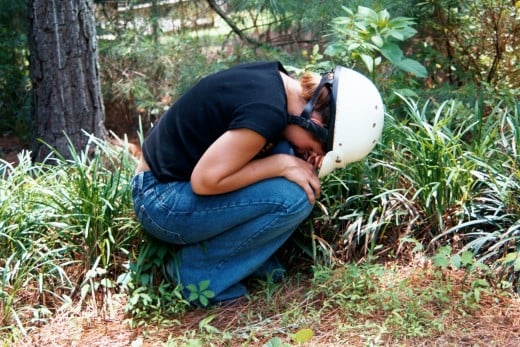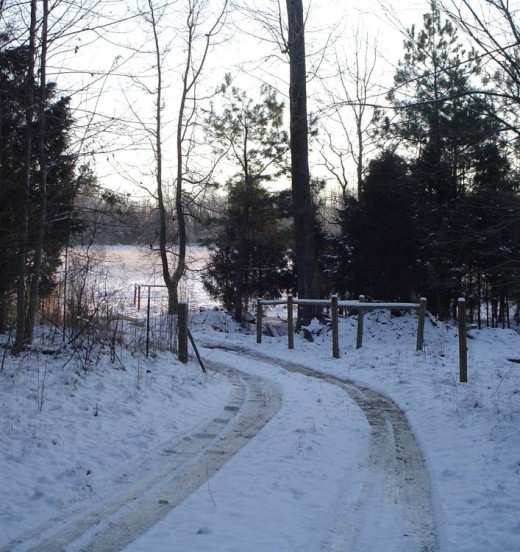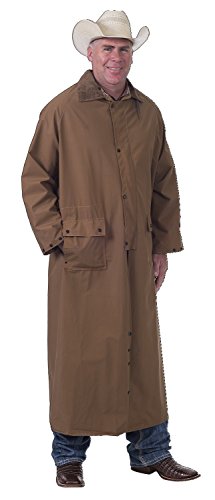Horseback Riding in Inclement Weather
Watching the Morning Weather Report
When talking about weather conditions and horseback riding, it's the unexpected that gets our attention. It takes more than tying a rain slicker to the back of your saddle to protect yourself and your horse from the whims of Mother Nature.
Even watching the morning weather report is no guarantee you won't be caught far from home, whether riding an endurance race, participating in a show or pleasure riding, when a storm hits. Besides leaving you cold and wet this unexpected event can even prove dangerous to you and your mount. Extreme hot and cold weather, mud, ice and snow, and electric storms all present special problems to the rider and horse, but with knowledge and planning the risks of riding in all weather conditions can be minimized.

Lightning
Lightning is probably the most frightening and dangerous situation encountered when riding. It is responsible for more deaths than any other weather hazard.
The National Oceanic and Atmospheric Administration reported in a 35-year study (1956-94) 90 deaths and about 225 reported injuries attributed to lightning strikes per year. These are human casualties, not including the number of horses struck by lightning every year.
They found the most likely times to be struck are in the summer months between two and four o'clock in the afternoon.
The National Lightning Safety Institute (NLSI) recommends that you plan in advance your evacuation and safety measures when participating in any outdoor activity.
As soon as you hear thunder, activate your plan. The NLSI says don't wait until it starts to rain, because lightning often hits before it rains. If you feel your hair standing on end, and/or hear a crackling noise you are already in lightning's field and must take immediate action.
If you are riding and a storm threatens get away from water, high ground and open spaces. Also avoid all metal objects including fences, machinery, power lines and towers, and motors. Open sheds like picnic and rain shelters or under a lone tree will keep you from getting wet, but will not protect you from lightning.
The NLSI says old caves or abandoned mines are not safe havens, but can be deadly shelters, attracting lightning. Also keep in mind that jagged outcrops of rock are more likely to be hit than smooth surfaces.
If possible find shelter in a substantial building or if you are at a show put your horse in his stall and wait in your car for the storm to blow over. If those shelters are not available move to lower ground, preferably near a group of low trees.
If you have time to secure your horse the best bet is to tie it to low growing brush. But, when a sudden storm catches you unaware the best thing to do is move away from your horse.
Immediately remove metal objects from your person, place your feet together, duck your head and crouch down low, in a baseball catcher's stance, with your hands on your knees.
If you are in a group stay at least fifteen feet away from each other to avoid multiple causalities. Wait thirty minutes until after the last sound of thunder to come out of your shelter.
Mud
Riding in muddy conditions may seem dangerous, but most horses learn to handle it. Sometimes it depends on the activity.
In competition over hilly or slippery terrain, of course, most eventers use studs in the horse's shoes. In everyday riding, take care to avoid straining a horse's legs on really greasy terrain. Stick to hacking in thick grass fields or all-weather footing arenas. When faced with sticky mud, slow down and let the horse negotiate his way along.
Cold
Horses are tolerant of extreme cold, but riding in snow and ice presents a bigger problem. Although not many are showing in this weather, it can slip up on exhibitors. This happened during an early March show in Raleigh, North Carolina several years ago. Late in the last day of the Morgan Arab Classic snow turned the air white and the roads icy. The show went on and footing wasn't a problem since the arenas were covered, but hauling the horses had to be delayed until the roads were cleared of ice and snow.
Riders and horses alike stood draped in blankets while they waited at the end gate for their class. Most of the horses were body clipped for this early spring show, so they definitely felt the cold. Trainers were quick the cover the sweaty horses as soon as they emerged from the show ring.
Body clipped horses will need to be blanketed on cold days. If they haven't been clipped nature has equipped horses to withstand winter weather.
Heat and Humidity
When riding under hot and humid conditions the highest risks to the horse are dehydration, heat stress, and heat stroke. Heat production increases as much as 50% during exercise. The heat increases sweating.
Knowing the signs of heat stress and reacting before it becomes heat stroke is very important. Weakness, rapid respiration, elevated body temperature, and even muscle tremors are signs of heat stress.
When these signs appear the horse should be moved into the shade and ideally a location where fans can be directed at the horse, give the horse water to drink, and sponge him down. The idea is to get the body temperature down.
The horse is suffering heat stroke when the breathing is rapid and deep, and he collapses. The body temperature can be up to 115 degrees. This is a life-threatening situation. The horse will require veterinarian attention immediately.
Caution Riding in Snow and Ice

The Unexpected
Perhaps one of the most bizarre foul weather conditions I have encountered affected the 1996 N.C. 4-H State Championship Horse Show in Raleigh, NC. Storm clouds threatened all day, but the classes were running smoothly and 4-Hers were managing to get into and out of their events without getting drenched in the sporadic downpours.
It was early afternoon when things took a turn for the worst. A sudden wind blew over the show grounds, and weather reports warned a tornado had just skimmed the area. It was close enough to have torn the roof off one barn and deposit a tree on top of a pickup truck. The children and horses were hustled into the large indoor, subterranean arena where they waited until the weather station announced the all clear. Miraculously, there were no injuries to horses or humans, just a lot of very frightened young people and parents. It is one show they will never forget.
Whether out for a morning trail ride or on the show grounds the ideal weather conditions are mild temperatures, low humidity and blue skies, with maybe a light breeze thrown in for good measure. Most horseback riders can only pray they're not stuck in the office on a day like that.
But, chances are pretty good that sometime in their riding career that ideal day will turn nasty, with horse and rider far from home. When that time comes the best defense is paying attention to the weather forecasts, keeping an eye on the sky, and following the recommended safety precautions.










